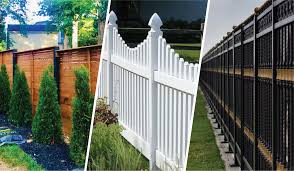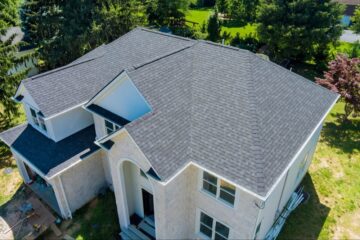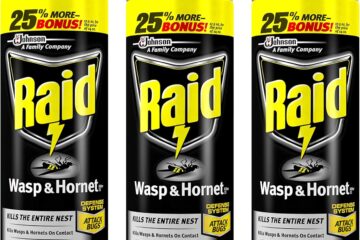When it comes to securing a property, adding privacy, or enhancing curb appeal, there are many types of fences to consider. A well-chosen fence not only marks boundaries but also provides safety for pets and children, increases property value, and contributes to overall aesthetics. However, with so many materials and styles available, selecting the right one can feel overwhelming. This guide explores different fencing options, their benefits, and key factors to help make the best decision.
Common Types of Fences
Each fencing material comes with its own advantages, durability, and maintenance requirements. Below are some of the most popular choices:
1. Wood Fencing
Wood fences are a classic and versatile option that offers both privacy and style. They come in different designs, including:
- Solid Panel Fencing: Best for blocking views and reducing noise.
- Shadowbox Fencing: Provides privacy while allowing airflow.
- Picket Fencing: A charming option for front yards and gardens.
- Split Rail Fencing: A rustic design, ideal for large properties or farm-style homes.
While wood fencing is aesthetically pleasing, it does require regular staining or painting to prevent rot, insect damage, and weathering over time.
2. Vinyl Fencing
Vinyl fencing is a low-maintenance alternative to wood. It resists rotting, insect damage, and fading, making it a long-lasting choice. Available in a variety of styles, including picket, panel, and rail designs, vinyl fencing is an excellent option for those who want the look of wood without the upkeep.
3. Chain Link Fencing
For affordability and security, chain link fencing is a practical choice. It is made from galvanized steel and provides a durable barrier that can withstand extreme weather conditions. While it does not offer much privacy, adding slats, privacy screens, or growing vines along the fence can improve its appearance and functionality.
4. Metal Fencing (Aluminum, Steel, and Wrought Iron)
Metal fencing is available in aluminum, steel, and wrought iron, offering strength, durability, and a sleek appearance.
- Aluminum: Lightweight, rust-resistant, and low-maintenance.
- Steel: Stronger than aluminum but requires protective coatings to prevent rust.
- Wrought Iron: Decorative, durable, and provides an elegant, high-end look.
Metal fences are commonly used for security, decorative purposes, and property boundaries. Some styles can also include spear tops or ornamental designs for added curb appeal.
5. Composite Fencing
Composite fencing is made from a blend of wood fibers and plastic, offering the appearance of wood but with greater durability and lower maintenance. It resists rot, fading, and insect damage, making it a long-term investment for homeowners who want a fence that lasts for years with minimal upkeep.
6. Bamboo Fencing
Bamboo fencing is an eco-friendly and sustainable choice that gives properties a natural, tropical look. It is strong, resistant to pests, and can last for years with proper care. However, bamboo fencing may require sealing to maintain its durability, especially in areas with high humidity or frequent rain.
7. Decorative and Garden Fencing
For landscaping and garden protection, decorative fencing options like lattice, wrought iron, or vinyl panels add beauty while keeping small animals out. Garden fences also help create visual boundaries and enhance the overall look of outdoor spaces. Some decorative fences come in no-dig designs, making them easy to install.
How to Choose the Right Fence
Choosing the best fence depends on a variety of factors:
- Purpose: Is the fence needed for security, privacy, pet containment, or aesthetics? Each type of fence serves a different function.
- Maintenance: Some fences, like wood, require frequent maintenance, while materials like vinyl, composite, and aluminum are low-maintenance options.
- Durability: Consider local climate conditions. Vinyl, composite, and metal fences withstand harsh weather better than wood, which may need more upkeep.
- Budget: Chain link and wood fences tend to be more affordable, while metal and composite fences cost more upfront but require less maintenance over time.
- Aesthetics: The fence should complement the home’s style. Whether a modern, traditional, or rustic look is desired, there is a fence material to match.
- Local Regulations: Always check zoning laws, HOA rules, and property boundaries before installing a fence to avoid legal issues.
Additional Features to Consider
Some fences come with extra features that can enhance their functionality and appearance:
- Privacy Screens: For homeowners who need additional seclusion, privacy screens can be added to existing fences.
- Decorative Post Caps: These small details enhance the look of wood and vinyl fences while protecting posts from weather damage.
- Gates and Automation: Adding a gate improves security and accessibility. Automated driveway gates offer convenience and added protection.
- Fence Lighting: Installing lights along the fence line can increase visibility, safety, and ambiance for outdoor spaces.
Final Thoughts
The best fence depends on individual needs, budget, and design preferences. Whether it’s for security, privacy, durability, or aesthetics, there is a fencing option to suit any property. Taking the time to weigh the pros and cons of different materials ensures the best choice for long-term satisfaction. A well-chosen fence not only enhances a home’s appearance but also provides safety, privacy, and value for years to come.




